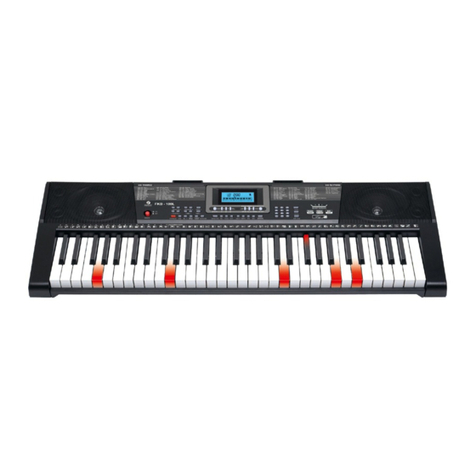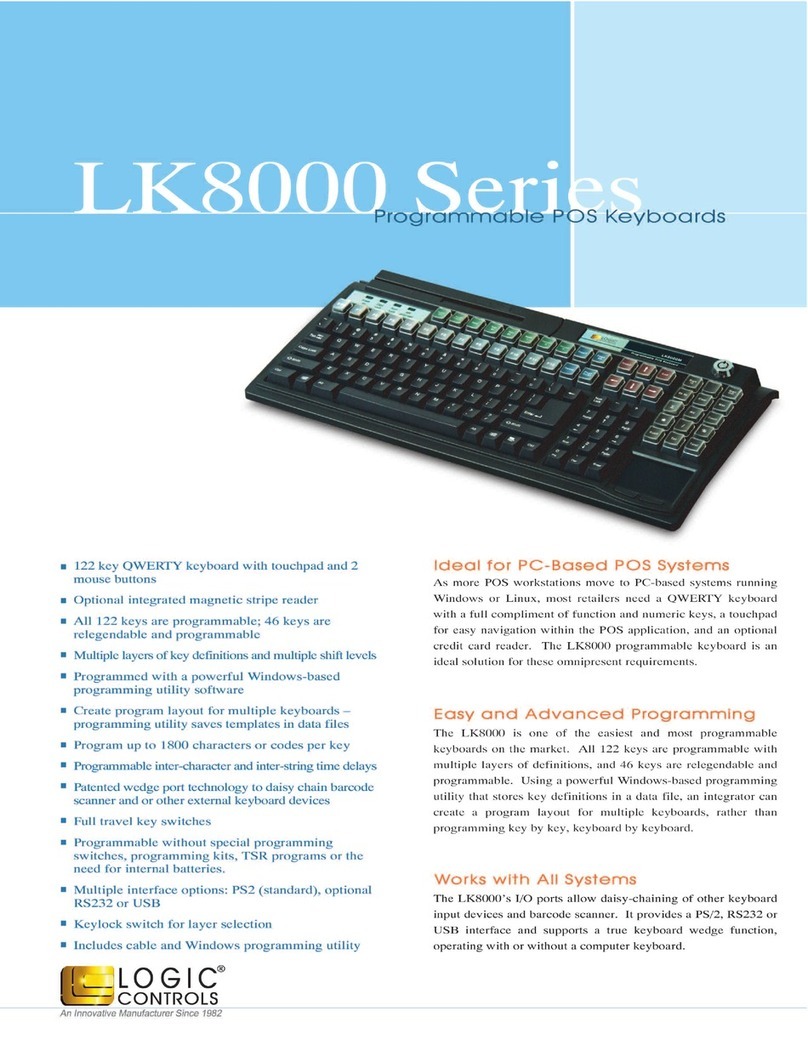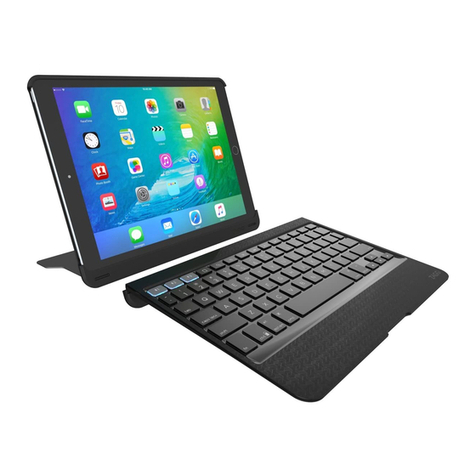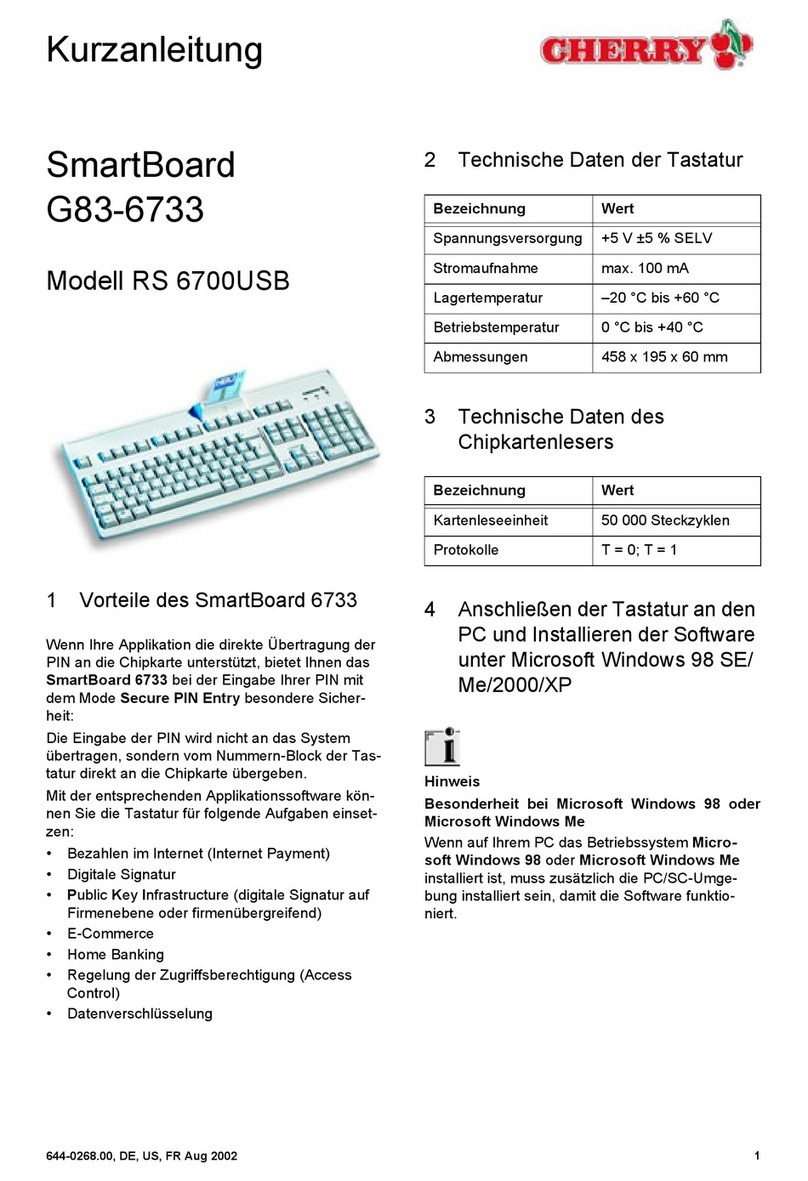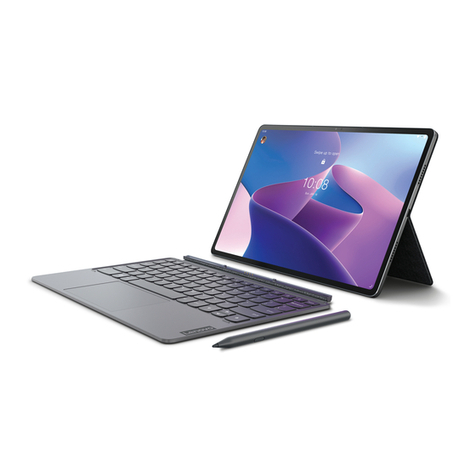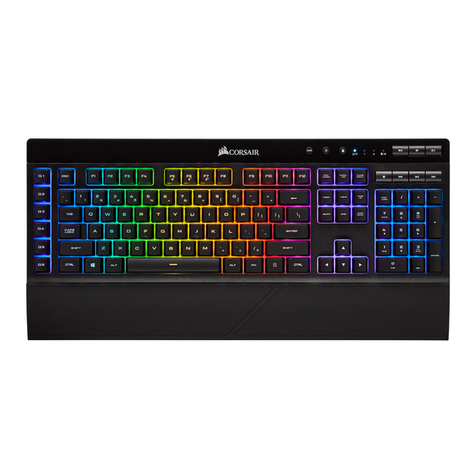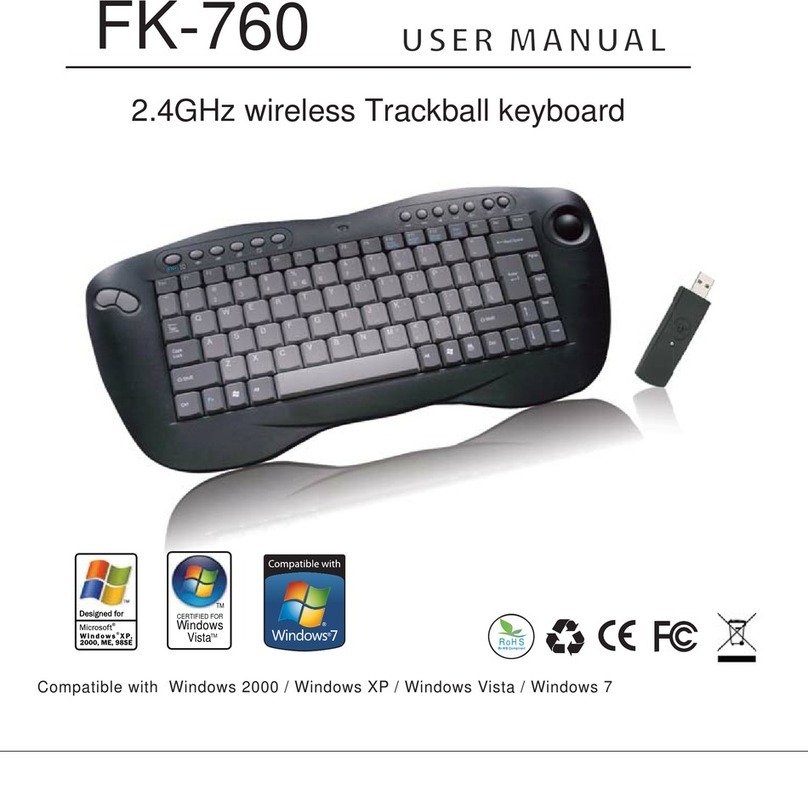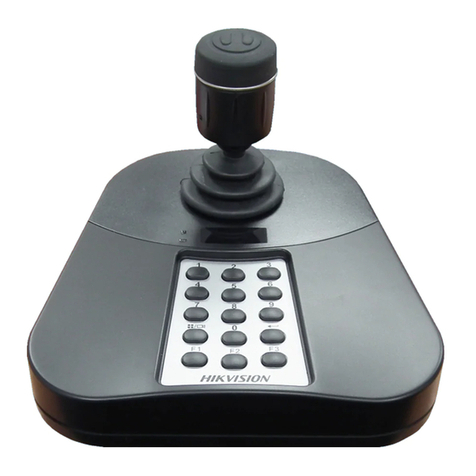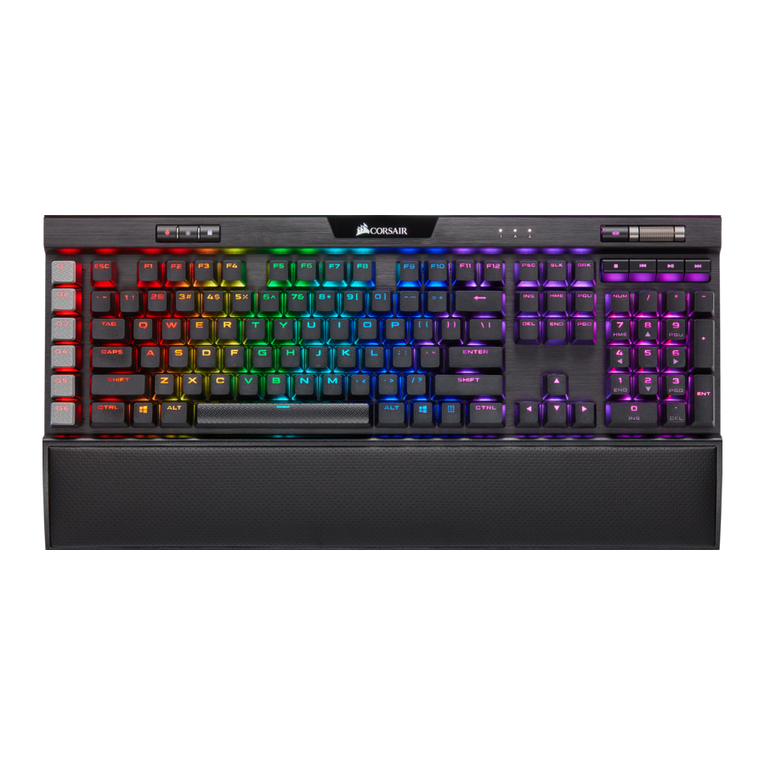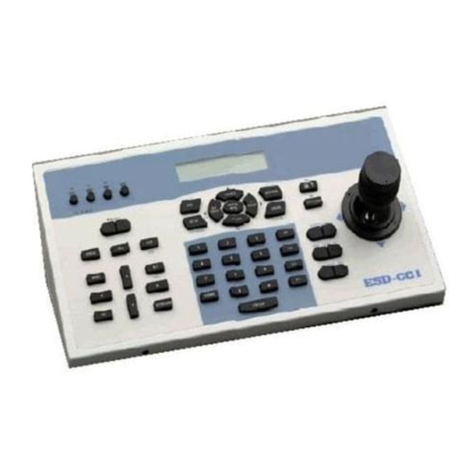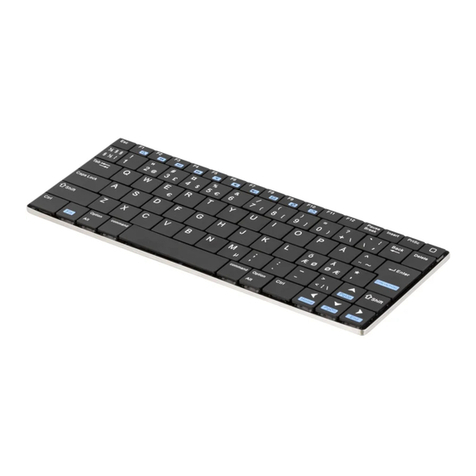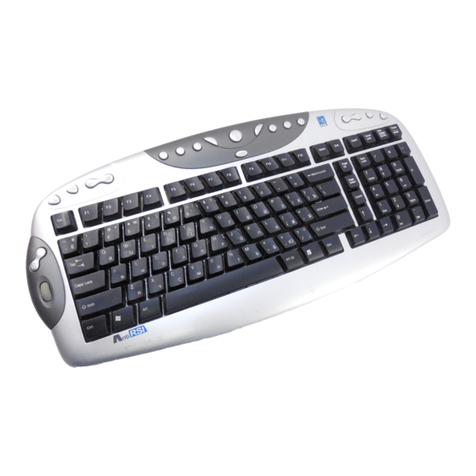FAZLEY FKB-180 User manual

FKB-180
61-key keyboard
User manual
The information in this user manual is subject to change at any time without notice.
Version:
1.0
Date of creation and author's initials:
25-02-2019RV
Revision date and author's initials: -

Introduction
Thank you for purchasing this Fazley keyboard. We advise that you read this user manual
in its entirety before unpacking the contents of the box, so that you are familiar with all of
the functionality that this product has to offer. Please be sure to check that all of the parts
and accessories listed below under Box contents are included in the package. In the event
that the FKB-180 does not function properly, or if you have any issues while operating it,
please remove the plug from the power socket and contact your dealer for assistance.
Box contents:
- Fazley FKB-180 keyboard
- power adapter
- sheet music holder
Please inspect t e device and t e included accessories.
Should you discover that either the device or one or more of the included parts have been
damaged or rendered defective while in transit, please contact your dealer directly.
Please note that the pictures in this user manual serve illustrative purposes only and may
differ slightly from the product you receive.
Contact:
Fazley musical instrument products and accessories
Verrijn Stuartweg 18
4462 GE Goes
The Netherlands
Please do not send any products to this correspondence address.
Should you wish to send in a product for repair or for a refund, please contact your dealer
for an RMA re uest (Return Merchandise Authorisation).
The information in this user manual is subject to change at any time without notice.
Version:
1.0
Date of creation and author's initials:
25-02-2019RV
Revision date and author's initials: -

Safety instructions
Everyone involved with the installation, operation and maintenance of this device must:
- Be qualified
- Be skilled
- Have read the instructions in this user manual
- Be sure that neither the device nor the included accessories are damaged. Should the
device or the included accessories be damaged, please contact your dealer for more
information.
- Ensure that the device is in good working condition and safe to operate. Please follow the
advice and instructions as they are described in this user manual.
Damage caused by misuse and/or modifications made to the device are not covered by the
warranty.
This device does not contain any parts that need to be repaired or replaced by the user.
Should maintenance or repairs be necessary, they must be handled by a qualified
technician.
Important information regarding ealt and safety:
- Do not remove any labels or stickers from this device.
- Do not leave any cables lying around.
- The device should not be opened up, and any hardware or software that may be present
should not be modified.
- To achieve optimal performance, inputs on this device should not be fed with a signal
higher than necessary.
- The outputs on this device should not be overloaded.
- The device should only be used indoors; contact with moisture, water and rain should
always be avoided. Do not place any objects containing liquids on top of the device.
- Remove the device from any nearby flames or heat sources; do not place it near
flammable fluids, gasses or objects.
- Disconnect this device from the power supply if it will not be used for a longer period of
time, if maintenance is necessary, or if the device needs to be cleaned.
- Do not pull on the cable to remove a connector, as this could cause damage.
- Do not use any cables other than the ones described in this manual. Do not use defective
cables. Please contact your dealer if the included or necessary cables do not function
The information in this user manual is subject to change at any time without notice.
Version:
1.0
Date of creation and author's initials:
25-02-2019RV
Revision date and author's initials: -
WARNING!
Keep t is device away from moisture, water and rain to avoid t e c ance
of electric s ocks.

properly with this device.
- In the event that the device is exposed to extreme temperature changes (e.g. transported
through a cold outdoor environment into a warm indoor environment), it should not be
turned on until it has reached room temperature. This is necessary to prevent moisture from
forming in the device, which could lead to electric shocks.
- Ensure that the AC/DC power adapter remains accessible at all times so that it can be
quickly disconnected from the mains power socket, if required.
- Ensure sufficient space around the AC/DC adapter so that the warmth it generates can
easily dissipate. Make sure that articles like curtains, cushions and other objects don t touch
the AC/DC adapter.
Guidelines and operation of t is device:
- This device is intended for indoor use by adults.
- This device can be used by children if accompanied by and/or supervised by an adult.
- This device should only be used in a suitable environment where no damage to the device
can occur. Do not use the device in moist or dusty environments such as:
- indoor swimming pools where chlorine is used
- beaches where there is sand and salt
- outdoors
- indoors in spaces where intense heat sources are present, or where it reaches
temperature levels that would be considered uncomfortable for a person
- Avoid impacts and collisions during use and transport. Do not transport the device while it
is in use. Avoid using excessive force when installing and operating the device.
- The user should become familiar with the functions of the device before using it.
- Should the device not be used in the manner described in this user manual, damages or
even injuries could occur. Fazley cannot be held responsible for any injuries or damages
that occur as a result of improper use of this product.
Storage and transport:
This product is designed for mobile use. It should not be transported on its own, however,
but either in its original packaging or in a suitable bag or flight case that protects it against
impacts, shocks and bumps.
- This device is not designed for permanent (24/7) use. The expected lifespan of the device
will not be affected by occasionally turning the device off. Disconnect the device or turn off
the power when it is not actively in use.
- If the device will not be used for a longer period of time, it should be disconnected and
stored in a dust-free environment.
- Do not expose the device to extreme temperature differences.
Housing
- Inspect the device s housing frequently, and always just before use. Avoid operating the
device if there are large dents or cracks, or if screws are missing. Do not use the device if
the housing is not in good condition. Contact your dealer or a qualified technician if you are
unsure about the state of the device.
- Check the device and the screws for corrosion. Corrosion must not be present on this
device. Contact your dealer or a qualified technician if you find any corrosion on the screws.
The information in this user manual is subject to change at any time without notice.
Version:
1.0
Date of creation and author's initials:
25-02-2019RV
Revision date and author's initials: -

- Every power and signal connector should be securely mounted. Do not use the device if
the connectors are not secure.
- Avoid dust and dirt build-up. Clean the device once a month by disconnecting it from the
power supply and wiping it down with a dry or slightly moist cloth. If the device is used
frequently, the cleaning intervals should increase.
Symbol explanation:
WEEE: Ensure that this device is disposed of properly. This product falls under
the WEEE (Waste Electrical and Electronic Equipment) directive. The
requirements of this directive apply to all manufacturers and producers of
electronic devices in the EU. Do not throw this product away with regular
household waste. Please contact your local authority for more information
about how to recycle and dispose of these products in your region. By
recycling this product in the proper manner, we can work together to ensure
that we can continue to enjoy these kinds of products and still protect the
environment as much as possible from pollution.
CE: The CE logo indicates that this product meets the European directives and
regulations to which it must legally conform.
Only suitable for indoor use: this product was only designed for indoor use.
The maximum environmental temperature must not exceed 40 degrees
Celsius (104 degrees Fahrenheit).
Battery danger:
CAUTION
Danger of explosion if battery is incorrectly replaced.
Replace only with the same or equivalent type of battery.
Do not expose batteries to excessive heat such as sunshine, fire and the like.
Do not leave batteries in an extremely high-temperature environment, as this may cause
explosions or leakage of flammable liquids or gas.
Do not burn batteries, do not place batteries in a hot oven, and do not crush or cut
batteries, as this may cause explosions.
Do not subject batteries to extremely low air pressure (high altitudes), as this may cause
explosions or leakage of flammable liquids or gas.
When equipment is not used for an extended period of time (e.g. a few months), batteries
should be removed.
Instantly remove empty batteries from the equipment.
Replace all batteries at the same time. Mixing old and new batteries or mixing different
types (such as alkaline and zinc-carbon) will reduce overall performance and may cause
leakage or rupture.
The information in this user manual is subject to change at any time without notice.
Version:
1.0
Date of creation and author's initials:
25-02-2019RV
Revision date and author's initials: -

Do not store loose batteries or carry them in your pocket or purse. Contact with metal
objects like coins and keys, etc. may cause them to leak, rupture or short-circuit.
Keep batteries out of reach of children.
Recycling:
Do not dispose of batteries in general household waste. Batteries can contain substances
that may harm the environment. If they are properly recycled, used batteries are a valuable
source of reusable materials. Contact your local government for information on battery
disposal.
The information in this user manual is subject to change at any time without notice.
Version:
1.0
Date of creation and author's initials:
25-02-2019RV
Revision date and author's initials: -

Guidelines and operation of t is device
1. On/Off button
2. Master volume +/-
3. Rhythm volume +/- | Octave +/- | Transpose +/- | Tempo +/-
4. Function menu | Mixer | Metronome selection | Chord mode
5. Direct rhythm
6. Holes for sheet music stand
7. Direct tone
8. Tone | Rhythm | Song selection
9. Number selection 0 - 9 and +,-
10. Data knob
11. Pitch bend wheel
12. Speakers
13. Start/stop | Sync | Intro/ending
14. Fill A | Fill B | Fade-in/fade-out
15. LCD display
16. Record | Play | Dual | Sustain | Modulation | O.T.S.
17. Memory/M1/M2/M3/M4/Bank
18. Learn mode/Left/Right
19. Touch/MP3 buttons
20. Volume-/Volume+/Previous Song/Next Song
The information in this user manual is subject to change at any time without notice.
Version:
1.0
Date of creation and author's initials:
25-02-2019RV
Revision date and author's initials: -

LCD display section
1. Display section
2. Character display (shows sound names among other things)
3. Tone indicator (lights up when sound is selected)
4. Rhythm indicator (lights up when rhythm is selected)
5. Song indicator ((lights up when song is selected)
6. Tempo indicator
7. Status memory indicator
8. Dual voice indicator
9. Chord mode indicator
10. Metronome indicator (shows the beat)
11. Chord display section
12. Learning mode indicator
13. Note display
Rear connection panel
1. Power adapter input
2. Line out (6.35 mm TRS jack)
3. Headphone output (6.35 mm TRS jack)
4. Sustain pedal input (6.35 mm TS jack)
5. USB MIDI connector (for exchanging MIDI data with a computer)
6. USB MP3 connector (for USB sticks up to 32 GB max.)
The information in this user manual is subject to change at any time without notice.
Version:
1.0
Date of creation and author's initials:
25-02-2019RV
Revision date and author's initials: -

Operating t e device
The Fazley FKB-180 is an entry-level keyboard with touch-sensitive keys. This makes it
perfect for beginning keyboard players who not only want to learn to play, but want to play
with feeling because each passage can be played differently.
The FKB-180 is equipped with all of the features a beginning keyboardist needs to become
familiar with playing the keyboard. It has a large range of sounds and accompaniments to
choose from in lots of different music styles.
Follow the steps and instructions below to get the best out of the FKB-180.
Preparation
Practical information before playing
- If two people wish to play at the same time without using the built-in speakers, a
headphone splitter (sold separately) should be connected to the headphone socket so that
two pairs of headphones can be used.
- Ensure that the power adapter cable isn’t taut and doesn t get tangled, bent too
excessively or damaged by sharp edges.
Keyboard positioning
It s important to place the FKB-180 on a stable surface at the correct height to ensure a
comfortable playing experience without causing any physical discomfort.
Fazley recommends investing in a good keyboard stand so that playing while standing or
sitting can both be done in comfort.
Placing the keyboard on a table, desk or similar surface may result in an uncomfortable
playing experience that could lead to physical discomfort.
A good playing position can be defined as follows:
- arms should hang freely next to the sides of the body (avoid tension in the shoulders to
create more arm height)
- forearms should be horizontal to the floor
- hands and fingers should be in the same sort of position as they naturally are when your
arms are hanging by your side
- elbows should be pushed forwards slightly towards the keyboard so that they are not
completely parallel to the body
The ideal playing position is very similar to the position that should be used when sitting
behind a desk and working with a computer. A keyboard like the FKB-180 is higher than a
computer keyboard, however, so it’s very important to make the necessary height
adjustments.
This playing position should be used regardless of whether you’re sitting or standing. That’s
The information in this user manual is subject to change at any time without notice.
Version:
1.0
Date of creation and author's initials:
25-02-2019RV
Revision date and author's initials: -

why it’s a good idea to choose a keyboard stand that’s suitable for both.
If you’re planning on playing sitting down, you should use a keyboard bench or stool that’s
height adjustable so that you can find the perfect playing height. Ideally, it should have
some padding and be flat to help you keep your back straight.
Connecting t e keyboard
The FKB-180 comes with a power adapter that needs to plugged into the keyboard and a
power socket with the correct voltage. Only the adapter that comes with the keyboard
should be used to power it.
Ensure that connected cables are not in a place that could cause someone could trip over
them. Also ensure that cables are not subjected to excessive forces. If necessary, an
extension cable can be used or, alternatively, the keyboard could be placed closer the
available power socket. Cable binders should be used to control any excess cable. Under
no circumstances should knots be tied in cables.
Batteries
The FKB-180 can be powered by 8 D-cell (1.5V) batteries. They need to be inserted
correctly according to the polarity shown in the battery compartment.
Using t e (built-in) speakers or eadp ones
The FKB-180 is equipped with built-in speakers that instantly play back whatever you play
on the keyboard. Whenever you want to practise in silence, however, a set of headphones
can be connected to a socket on the back.
The headphone socket is suitable for virtually all headphones that are designed for listening
to music. In the event that your headphones have a connector of a different size, an
adapter can be purchased. Consult your dealer for advice if you’re unsure about what you
need.
Before you put on your headphones and start playing, check the volume level. Pay
particular attention to the volume level before allowing children to play the keyboard while
wearing headphones. It s best to lower the volume on the keyboard before putting
headphones on and only raising it to the volume necessary to hear what you re playing.
This will greatly reduce the chance of any hearing damage.
The volume can be adjusted using the Volume knob.
It s best to take regular breaks to give your hearing a rest and not play for hours on end.
It s also possible to connect external (active) speakers to the socket on the back for
performance purposes, for instance. Again, it s recommend to lower the volume on the
keyboard (and the speakers) before connecting them. Once connected, the volume levels
on the keyboard and the speakers can be adjusted as required. It s best to ensure that the
output level on the keyboard is not too low (around 50% is recommended), so that you re
not relying entirely on the external speakers to boost the signal. The internal speakers on
The information in this user manual is subject to change at any time without notice.
Version:
1.0
Date of creation and author's initials:
25-02-2019RV
Revision date and author's initials: -

the keyboard are not designed to be used continuously at full power and in fact, doing so
may result in a distorted sound and damage to the speakers.
Turing t e keyboard on
The keyboard can be turned on and off using the On/Off button. It should be turned off
whenever you re finished playing.
Using a USB stick wit music
If you want to play along with your own music, you can do so by connecting a USB stick
(max. 32 GB) to the FKB-180 and using the built-in MP3 player. Underneath the display are
controls for playing, pausing and selecting previous or next MP3 song files. Holding down
the Previous song button will lower the volume level, while holding down the Next song
button will raise the volume level as indicated by the text above the buttons.
USB MIDI
The FKB-180 also has USB MIDI functionality that can be used to do things like play MIDI
notes into certain software, or trigger certain sounds in DAW software or plugins. Thanks to
the bi-directional communication, it s also possible to send MIDI signals from a computer to
the FKB-180 enabling sounds to be played.
A USB cable is not included. One can be purchased from your local dealer or a computer
shop.
Sound selection
Selecting a Tone
The FKB-180 has 422 sounds on board that can be selected using the number keys on the
right hand side of the keyboard, or alternatively, scrolled through using the data knob.
Ensure the Tone button has been pressed first by checking the status of the Tone indicator
on the top left of the display (it should be on). Also check the status of the Song indicator (it
should be turned off). The + and - buttons can also be used to scroll through all of the
available sounds.
At the top of the keyboard, the number range of certain groups of sounds are indicated to
help you find the type of sound you re looking for more quickly if you don t know the
number.
Dual Voice function
Activating the Dual Voice function allows two different sounds to be layered on top of one
another. This gives you the sound of two different instruments being played at the same
time.
Selecting the first sound is done as described in the Selecting a Tone section above. After
this, activate Dual Voice mode by pressing the ‘Dual’ button and then a second sound (R2)
can be selected.
The information in this user manual is subject to change at any time without notice.
Version:
1.0
Date of creation and author's initials:
25-02-2019RV
Revision date and author's initials: -

The display will show Dual to indicate that Dual Voice mode has been activated.
Pressing the Dual button again will de-activate Dual Voice mode and return the keyboard to
its previous state.
The information in this user manual is subject to change at any time without notice.
Version:
1.0
Date of creation and author's initials:
25-02-2019RV
Revision date and author's initials: -

Effects and functions
Sustain
Pressing the Sustain button adds a sustain effect to the notes being played. This results in
the sound of the notes lasting longer. Pressing the Sustain button again turns this function
off again. It s also possible to add sustain using a separately-available sustain pedal that
can be connected to the back of the keyboard.
Modulation
Pressing the Modulation button adds an expressive modulation effect (vibrato). This results
in the sound of notes slightly varying in pitch. Pressing the same button again turns it off
again.
Touc (sensitivity)
Pressing the Touch button activates the touch-sensitive mode whereby sounds are played
at different volume levels depending on how hard the player presses the keys. This allows
more expressive playing. Pressing the Touch button again will de-activate the touch-
sensitive mode.
Tempo
The Tempo buttons allow the tempo of the accompaniment rhythms and demo songs to be
adjusted. The default is 100 BPM (beats per minute). Once the tempo has been changed,
these settings will remain until they re changed again or the keyboard is switched off. When
it s switched on again, the default tempo will again be 100 BPM. Press the Tempo + button
once to increase the tempo by 1 BPM and press the Tempo - button once to decrease the
tempo by 1 BPM. Pressing the Tempo + and Tempo - buttons at the same time will reset
the tempo to 100 BPM.
Transpose
Pressing the Transpose + or Transpose - buttons change the keyboard s pitch. The pitch
can changed by up to 12 semitones upwards or downwards. Pressing both Transpose
buttons at the same time will reset the keyboard to its original setting.
Metronome
Pressing the Metronome button activates the FKB-180 s built-in metronome function. By
default, it s set to 4/4 time, but the time signature is adjustable. To change it, press the
Function Menu button until Beat shows up in the display. Then press the + or - buttons on
the number pad or use the Data knob to select one of nine different time signatures. The
metronome function can also be activated after an accompaniment rhythm has been
chosen.
C ord mode
Chord mode lets you automatically change the accompaniment chords. It can be switched
between an A.B.C. mode and a Full Range mode. In A.B.C. mode, playing one of the first
nineteen keys, or a combination of multiple within that range, will result in a chord change of
the accompaniment. In Full Range mode, you must play complete chords anywhere on the
The information in this user manual is subject to change at any time without notice.
Version:
1.0
Date of creation and author's initials:
25-02-2019RV
Revision date and author's initials: -

keyboard in order to change the accompaniment, and you can continue to use all the keys
to play along with the accompaniment.
The following are chord schemes for the A.B.C. mode and Full Range mode respectively.
The information in this user manual is subject to change at any time without notice.
Version:
1.0
Date of creation and author's initials:
25-02-2019RV
Revision date and author's initials: -

O.T.S.
After selecting an accompaniment rhythm, pressing the O.T.S. button activates the O.T.S.
function (one touch setting). It allows you to select a sound that matches your chosen
accompaniment rhythm. Buttons M1 - M4 give you a choice of four appropriate sounds.
When the O.T.S. function is activated, Chord mode is activated too (see Chord mode
above).
Pitc bend
The Pitch Bend wheel causes the pitch to go up or down by a certain amount depending on
which way and by how much it is moved. As soon as it s released, it automatically jumps
back to the middle position.
Rhythm and accompaniments
R yt m selection
Now that we ve learned about the sound functions, let s take a look at the standard
accompaniment rhythm options.
Pressing the Rhythm button activates one of the accompaniment rhythms that can be
selected by entering the appropriate number using the 0 - 9 number pads, the + and
buttons, or the scroll wheel. At the top of the keyboard, the number ranges of different
rhythm genres are indicated to help you find the type of rhythm you re looking for more
quickly if you don t know the number.
To start an accompaniment, press the Start/Stop button and press the same button again
to stop it.
Song
In addition to standard accompaniments, it s possible to play along with any of the 120
complete songs. Press the Song button to play one of the 120 songs on the FKB-180, that
can be selected by entering the appropriate number using the 0 - 9 number pads, pressing
the + and - buttons or the scroll wheel. Pressing the Start/Stop button will stop a song
that s playing. Refer to the ‘Demo list’ in this manual for an overview of all the songs.
Sync
After pressing the Sync button, it s possible to start an accompaniment rhythm whenever
you like by pressing one of the first nineteen notes on the keyboard. Then you can simply
play along.
If a rhythm is already playing, pressing the Sync button will prepare the accompaniment
rhythm for a different song. You can also select a different accompaniment rhythm before
activating the Sync function again if you like.
Intro/Ending
It s possible to add an intro and/or an ending to your song. To add an intro, press the
Intro/Ending button and then press the Start/Stop button to start the intro which will be
followed by the accompaniment rhythm you ve chosen. To add an ending to your song,
press the Intro/Ending button after which the accompaniment rhythm will stop.
The information in this user manual is subject to change at any time without notice.
Version:
1.0
Date of creation and author's initials:
25-02-2019RV
Revision date and author's initials: -

Fill A/Fill B
Press the Fill button (A or B) to add a fill to the accompaniment rhythm of your song. The
fill played is determined by the accompaniment rhythm selected.
After the fill, the selected accompaniment rhythm will continue playing. The Fill In function
can be used as often as desired.
Fade-in/fade-out
Press the ‘Fade-in/fade-out’ button before or during a selected rhythm to gently fade in or
out of the selected accompaniment.
Accomp volume
The volume of the accompaniment rhythm can be adjusted independently from the master
volume. This means that the accompaniment rhythm can blend into the background more
so that your playing can be heard more clearly, for instance.
The accompaniment rhythm volume can be set anywhere between 0 and 32 using the +
and - buttons. The value will be shown on the display.
Record function
The FKB-180 has a recording function that allows you to record your playing. Press the
Record button to activate the recording mode. Recording will then start as soon as you
play your first note. When you re finished playing, the recording will stop. Pressing the Play
button will let you hear the recording.
Status memory
The FKB-180 has an internal memory where user presets can be stored. Four presets can
be stored per bank and each can be accessed and cycled through via the Bank mode.
Presets can be accessed and loaded within a bank by pressing the M buttons underneath
the display.
To save presets, hold the Memory button and press M1, M2, M3 or M4. Bear in mind that
the preset will be stored in whatever bank you are currently in!
The number of the selected ‘M’ button will then be displayed followed by the message
MEM STOR that confirms the preset has been saved. Presets include the selected
accompaniment rhythm and its functions as well as the selected sound and any effects
you re using. Any existing presets in the same slot on the same bank will be overwritten by
the new preset.
Function menu
Pressing the Function Menu button activates the function menu where various parameters
can be adjusted. These include various settings that affect the sound of the keyboard. You
can choose between different effects like Reverb and Chorus, although you may not want
effects like this at all when a piano sound is selected, for example. For this reason, they can
be de-activated when required. When used with other instruments, however, effects like
The information in this user manual is subject to change at any time without notice.
Version:
1.0
Date of creation and author's initials:
25-02-2019RV
Revision date and author's initials: -

this, when set to the right levels, can enhance sounds by giving them an extra dimension.
All of the possibilities can be cycled through by pressing the Function Menu button multiple
times. When you ve found the function you want to adjust, you can do so using the + or -
buttons or the Data knob. After the adjustment has been made or when no action has been
taken for 3 seconds, the Function Menu will close again.
Any values you set within the Function menu can be reset to their default values by
pressing the + and - buttons at the same time. Any values you set will only be retained as
long as the keyboard is switched on. If the keyboard is switched off and on again, the
default values will be automatically restored.
An overview of the functions:
Metronome type Beat: 0 - 9
Tune -50 - +50
Reverb type 1 - 10
Reverb level 0 - 127
Chorus type 1 - 10
Chorus level 0 - 127
Mixer
The Mixer console function provides more possibilities to adjust the volume balance
between different sounds, in particular the sounds used for the accompaniment rhythms.
The harmonies could be made more or less prominent, for instance, as could the
percussion sounds. Settings can be adjusted using the + or - keys, just like they are in the
Function Menu. The values are set to 28 by default, but can be adjusted anywhere between
0 and 32.
An overview of the possibilities:
Percussion backing track volume
(Rhythm_m)
0 - 32
Bass level 0 - 32
Harmony track1 volume (Chord 1) 0 - 32
Harmony track2 volume (Chord 2) 0 - 32
Harmony track3 volume (Chord 3) 0 - 32
Master voice track volume (Upper 1) 0 - 32
Dual Voice track volume (Upper 2) 0 - 32
The information in this user manual is subject to change at any time without notice.
Version:
1.0
Date of creation and author's initials:
25-02-2019RV
Revision date and author's initials: -

Lesson function
The FKB-180 has a built-in lesson function that makes it possible to learn to play easy as
well as more complex well-known songs. It s possible to focus lessons on the left hand or
right hand parts only.
Before you can start the lesson function, you need to press the Song button. This will start
a song which you can stop by pressing the Start/stop button. Now press the Lesson
button. The word Lesson will then appear above the hands shown on the bottom right.
Three different Lesson modes can be chosen by pressing the Lesson button multiple times.
At the end of each lesson, feedback will be given by the virtual teacher. This will either be
OK , Good , Very Good! or Excellent! . This feedback is designed to encourage players to
improve.
Lesson 1:
This lesson mode is designed to help those who want to practise their timing.
In lesson 1, it s not so important which key you press, but it must be played at the right time
to match the beat of the music that is being played. It s possible to focus the lesson on the
right or left hands only. If you choose to focus on the right hand only, that part will not be
played so that you can do it yourself. If you choose to focus on the left hand only, that part
will not be played so that you can do it yourself. If you choose to focus on both hands,
neither part will be played so that you can do it yourself. Again, it s not so important which
keys you press in this mode, but they must be played at the right time to match the beat of
the music that is being played.
Lesson 2:
In Lesson 2, it s more important to play the correct note or chord. Whenever a mistake is
made, the music will stop until the correct note or chord is played. As soon as it is, the song
will continue. It s also possible here to focus the lesson on the right or left hands only, so
that you can play those parts yourself.
Lesson 3:
In Lesson 3, it s even more important to play the correct note or chord. In this mode,
assistance is turned off which means it s entirely up to the keyboard player to play the
correct notes or chords at the right time to match the beat of the music that is being played.
Playing along with own music
It s possible to play along with your own music by inserting a USB stick with MP3 files into
the keyboard s USB port on the back. Using the MP3 navigation keys, which can found be
underneath the display, you can select the track you want to play along with. This gives you
many more possibilities in addition to the built-in songs.
Note that the lesson functions do not work with your own music.
The information in this user manual is subject to change at any time without notice.
Version:
1.0
Date of creation and author's initials:
25-02-2019RV
Revision date and author's initials: -

Built-in voices, r yt ms and songs
The information in this user manual is subject to change at any time without notice.
Version:
1.0
Date of creation and author's initials:
25-02-2019RV
Revision date and author's initials: -

The information in this user manual is subject to change at any time without notice.
Version:
1.0
Date of creation and author's initials:
25-02-2019RV
Revision date and author's initials: -
Table of contents
Other FAZLEY Keyboard manuals
